Ever wonder what’s floating around in your home’s air right now? Dust mites, pollen, mold spores, pet dander, chemical fumes—and that’s just the short list. If your HVAC system is just cycling that stuff over and over, then every breath you take might be… well, kind of gross.
That’s where air scrubbers come in. These aren’t the flimsy plug-in gadgets from a late-night infomercial. We’re talking professional-grade filtration systems—like the Integrated Air Scrubber—built to wipe the air clean at the source: inside your HVAC ductwork. Think hospital-level air quality, but at home.
In this guide, we’ll break down exactly what air scrubbers are, how they work, whether they’re worth your money, and—most importantly—how to install one without calling in a full HVAC crew. You’ll get clear steps, real cost breakdowns, and pro-level tips even a total beginner can follow.
Ready to stop breathing recycled funk and start taking in real, clean air? Let’s get into it.
What is an Air Scrubber and How It Works?
What is an Air Scrubber?

Imagine you're sitting in your living room. The HVAC system hums quietly. You breathe in… but what exactly are you inhaling? Fresh air? No you'd never guessEven in spotless homes, indoor air can hold pet dander, pollen, mold spores, bacteria, and chemical vapors.
And your standard HVAC filter? But not all airborne particles are purified, so this is where you need Air Scrubbers to help you out. A real Air Scrubber hooks into your HVAC ductwork and cleans the air circulating through your entire house.
In simple terms: an air scrubber is a high-performance purification device installed directly inside your HVAC system. It captures and neutralizes airborne pollutants before they ever reach your living space.
It’s different from a regular air scrubber. Most scrubbers only clean the air in a single room. An air scrubber, once installed in the HVAC system, purifies every cubic foot of air being pushed through your home—whether you’re in the kitchen or the attic.
How Does an Air Scrubber Work?
The Air Scrubber has two main filtration devices, a pre-filter Stops the Big Stuff, such as Hair. Lint. Large dust particles. They're all caught in the first filter layer. Think of this as the doorman at a club-if it's big and obvious, it gets stopped here.
A true HEPA (High-Efficiency Particulate Air) filter traps 99.97% of particles that are 0.3 microns or larger. For context, a human hair is around 50 micrometers wide. So this thing traps mold spores, smoke particles, pet allergens-anything microscopic.
If you need a whole-house air scrubber, I recommend The 550 CFM HEPA Air Scrubber. It processes 550 cubic feet of air per minute, which means it can filter the entire air volume of a 2, 000 sq. ft. home in a 2, 000 sq. ft. home. It processes 550 cubic feet of air per minute, which means it can filter the entire air volume of a 2, 000 sq. ft. home in under an hour. Ideal for allergy-prone households, post-renovation cleanups, or anywhere dust and fumes are an issue.
These components kill bacteria and viruses, neutralize odors, and break down VOCs (volatile organic compounds) on a molecular scale. These components kill bacteria and viruses, neutralize odors, and break down VOCs (volatile organic compounds) on a molecular level.
Are Air Scrubbers in HVAC Worth It?

Yes it is well worth it.
If your HVAC system is the lungs of your home, then an Air Scrubber is the immune system. It removes contaminants like dust, VOCs, mold spores, smoke particles, pet dander, and even bacteria-before they recirculate into your living space. It removes contaminants like dust, VOCs, mold spores, smoke particles, pet dander, and even bacteria-before they recirculate into your living space. Not even close.
What would you have if you installed a whole-house air scrubber inside your HVAC?
Unlike plug-in units that handle a single room, an air scrubber integrates into your HVAC system and cleans the air across your entire house. every room. every vent. Constantly.
If anyone in your home has allergies, asthma, or a weakened immune system. Air scrubbers drastically reduce airborne allergens, mold spores, and pathogens. Air scrubbers drastically reduce airborne allergens, mold spores, and pathogens.
Dealing with post-flood damage? Old basement smell? Cooking fumes that linger for hours? You need a dedicated air scrubber for mold and VOCs. unit neutralizes odor molecules and spores at the source.
One standout model is the 550 CFM HEPA Air Scrubber. It filters 550 cubic feet of air per minute with a multi-layer HEPA setup. Great for households, remodeling projects, or any environment. It filters 550 cubic feet of air per minute with a multi-layer HEPA setup. Great for households, remodeling projects, or any environment that demands superior air hygiene.
What is the return on investment ratio for air scrubbers?
Initial equipment cost: $600-$1,200 depending on brand and features. $300-$700 for most HVAC setups. Filter replacement approx. $50-$100 every 3-6 months. Potentially priceless if you or your family suffer from respiratory issues.
For under $2,000, you can transform your air quality from “questionable” to “clinic-grade.” That's far less than the medical grade. That's far less than the medical bills or remediation costs from letting air quality problems pile up.
If you're still stuck on which machine to choose, you can read this article:The 6 Best HEPA Air Scrubbers of 2024
How to Install an Air Scrubber in HVAC System?
550 CFM HEPA air cleaners are plug-and-play units. You don't need to install them on your ductwork.
If you are going to connect air scrubbers directly to your ductwork, they are usually located on the return side of your HVAC system so that you can clean the air before it enters the blower and circulates through your home.
Tools and Materials You’ll Need
-
Air scrubber unit
-
Sheet metal screws or self-tapping screws
-
Metal snips
-
Drill/driver
-
Tape measure
-
Sheet metal tape (HVAC foil tape, not duct tape)
-
Mounting brackets or platform (depends on model)
-
Safety gloves and glasses
-
Power source (120V or 220V depending on unit)
-
Optional: flexible ducting or collars if using a bypass install
Step 1: Determine the Correct Installation Location
You want to install the air cleaner on the return side of the HVAC system, before the air reaches the furnace or air handler. Protecting the HVAC components while trapping dirty air before it reaches the blower ensures whole-house filtration!
Look for a straight section of return air duct with enough clearance to securely mount the unit. You may also want to consider a bypass configuration using flexible ducting if the unit is portable and duct compatible.
Step 2: Cutting the Access Port
With the unit locked in place, measure the size of the scrubber intake and exhaust ports, trace the dimensions on the ducting, and use metal shears to cut the openings, filing down sharp edges as necessary!
Step 3: Mounting the Air Cleaner to the Ducting
If designed for inline mounting (mounting inside the duct), use the supplied bracket to hang or mount it on a platform. If connected externally via collar, insert the air inlet and exhaust ports into the cut openings and secure them with sheet metal screws. Seal all seams with HVAC aluminum foil tape to prevent air leaks.
Step 4: Connect the Power Supply
Most home air cleaners use a standard 120V outlet. For permanent installations: Have an electrician hardwire the unit to an HVAC distribution panel or nearby outlet. For plug-in models, simply make sure the outlet is grounded and close enough that no extension cord is required. If your model includes a UV-C lamp or ionization module, verify that the internal components light up when energized.
Step 5: Test Airflow and Operation
With the wires connected, turn on the HVAC blower (you can set it to “Fan On” on the thermostat). Check the airflow through the scrubber and listen for rattling or vibration, use a hand-held anemometer if you want to verify that the airflow CFM is within specifications, and check for error codes if the air cleaner includes a filter indicator light or performance indicator light.
Step 6: Establish a Filter Maintenance Program
The filter is the heart of the system. Clean or replace the filter as often as needed, usually every 3-6 months. Some environments (construction zones, homes with pets, or basements prone to mold) may require more frequent filter changes.
How Much Does it Cost to Install an Air Scrubber?
Expect a total cost between $900 and $2,500, depending on the unit, your HVAC setup, and whether you hire a pro or go the DIY route.
Equipment Cost
Here’s what the units themselves cost, based on capability:
|
Type of Unit |
Price Range |
Best For |
|
Entry-level plug-in scrubbers |
$100 – $300 |
One room only—not a true scrubber |
|
Portable HEPA air scrubbers |
$450 – $850 |
Jobsites, flood cleanup, mold mitigation |
|
HVAC-integrated air scrubbers |
$800 – $1,500+ |
Whole-home purification via duct system |
Example: The 550 CFM HEPA Air Scrubber sits in the $650–$850 range. It filters 550 cubic feet of air per minute—ideal for homes up to 2,000 square feet or post-construction spaces.
Installation Cost
Now, unless you’re confident about cutting into ducts and wiring up power, you’ll probably need an HVAC tech.
|
Service Type |
Cost Estimate |
|
Basic duct install |
$300 – $500 |
|
Electrical hardwiring |
$150 – $350 |
|
Custom ductwork |
$500+ |
DIY install? You’ll save the labor, but factor in tools, time, and risk. If you mess up duct sealing or airflow, you could reduce your system’s efficiency—or even damage it.
Ongoing Maintenance
Air scrubbers don’t just run forever. They rely on filters. And filters cost money.
|
Maintenance Item |
Cost |
Frequency |
|
Pre-filters (foam or mesh) |
$15 – $30 |
Monthly or as needed |
|
HEPA filters |
$50 – $100+ |
Every 3–6 months |
|
UV-C bulb (if included) |
$30 – $100 |
Annually |
If you’re dealing with mold or heavy particles (e.g., drywall dust), use a specialized air scrubber for mold, and expect to replace filters more frequently, especially during remediation.
Total Cost Examples
|
Use Case |
Approx. Total |
Details |
|
DIY install in home |
$850 – $1,200 |
Mid-range air scrubber + basic tools |
|
Pro install, 2,000 sq. ft. house |
$1,400 – $2,200 |
High-performance unit, full duct integration |
|
Mold remediation or flood cleanup |
$1,200 – $2,500 |
Commercial-grade unit + frequent filter replacement |
Conclusion
Installing an air scrubber in your HVAC system isn't just a home upgrade, it's a health initiative with real-world impact. From filtering out mold spores and building dust to eliminating bacteria and volatile chemicals, a great unit like the 550 CFM HEPA air cleaner can give your indoor air a thorough cleaning. Sure, the upfront cost ranges from $900 to $2,500, depending on your setup, but the payoff is 24/7 air you can count on.
Whether you're trying to protect a newborn, control allergies, or are tired of that mysterious odor in your vents, these numbers will benefit you.
Need help choosing the right unit for your house layout or family needs? Ask for your requirements and we at Abestorm will help you out.



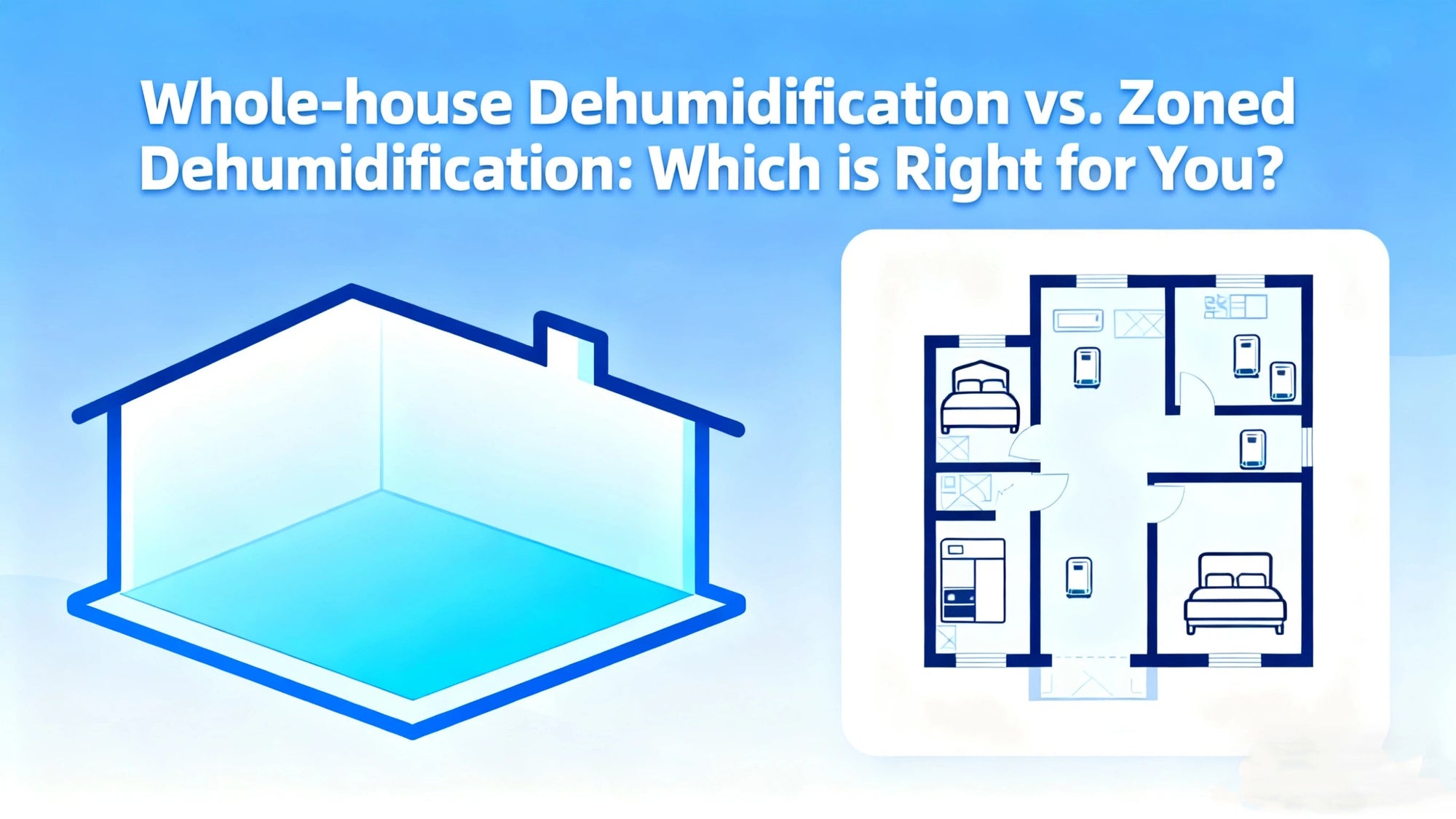
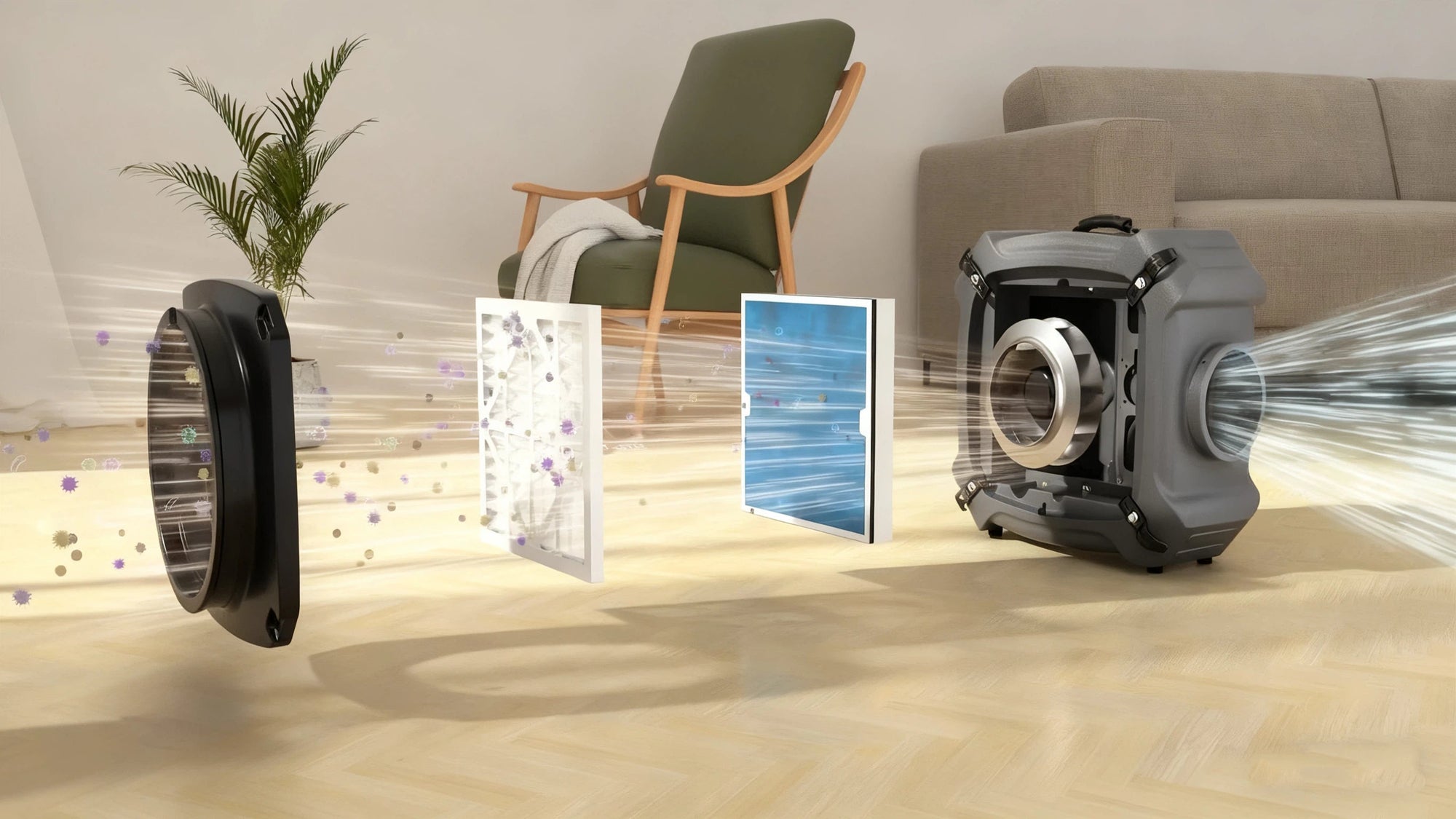
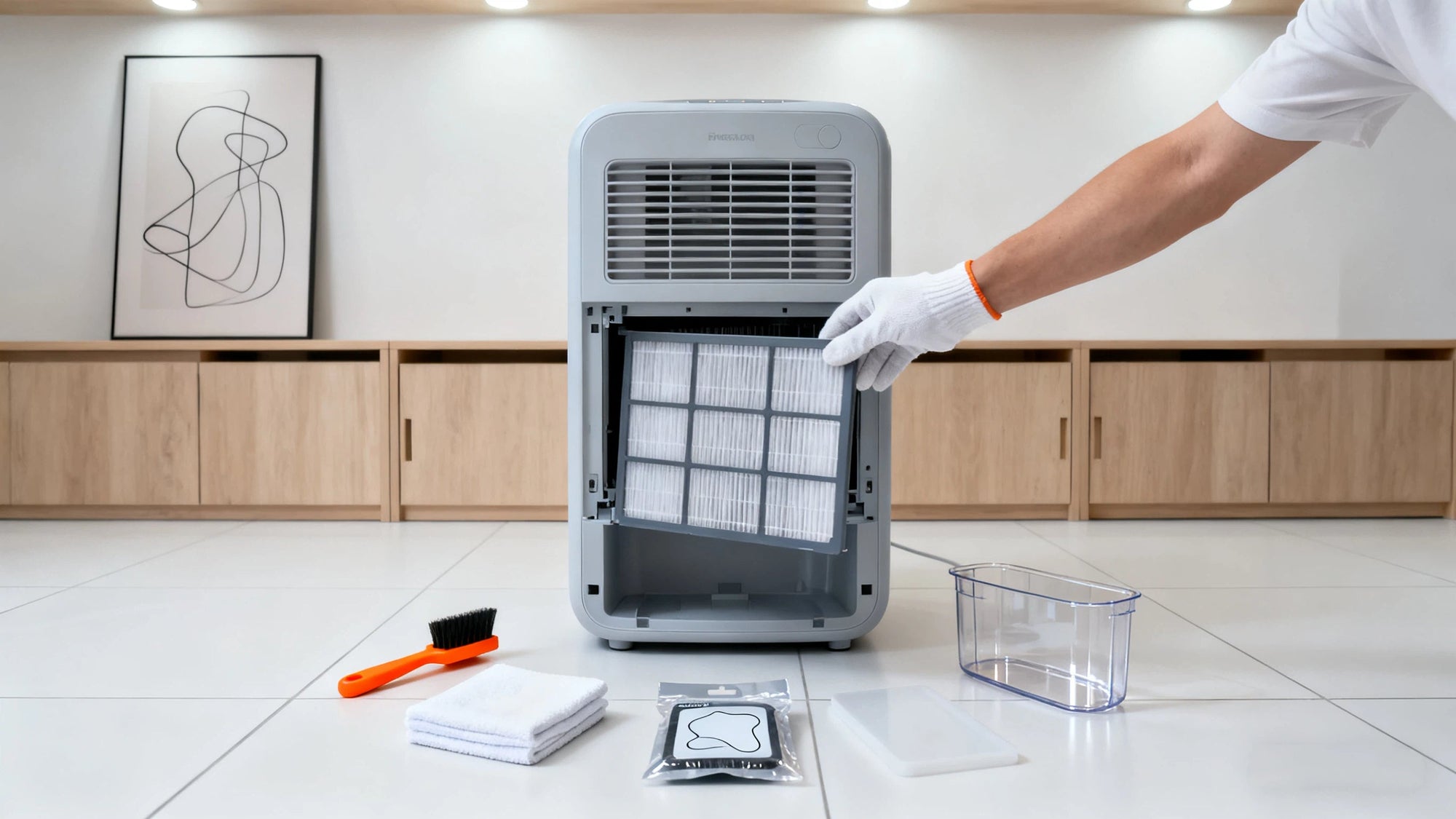
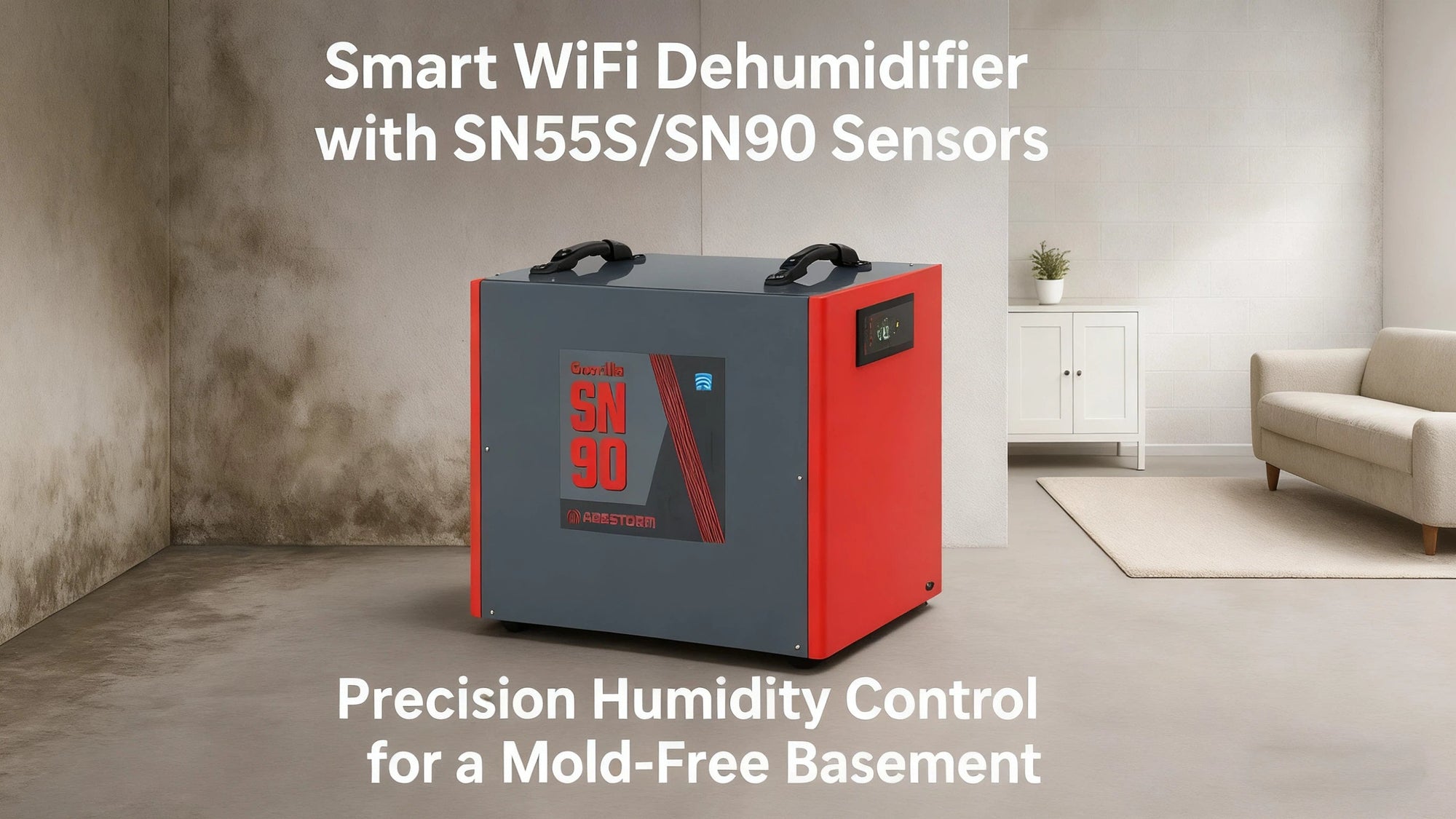
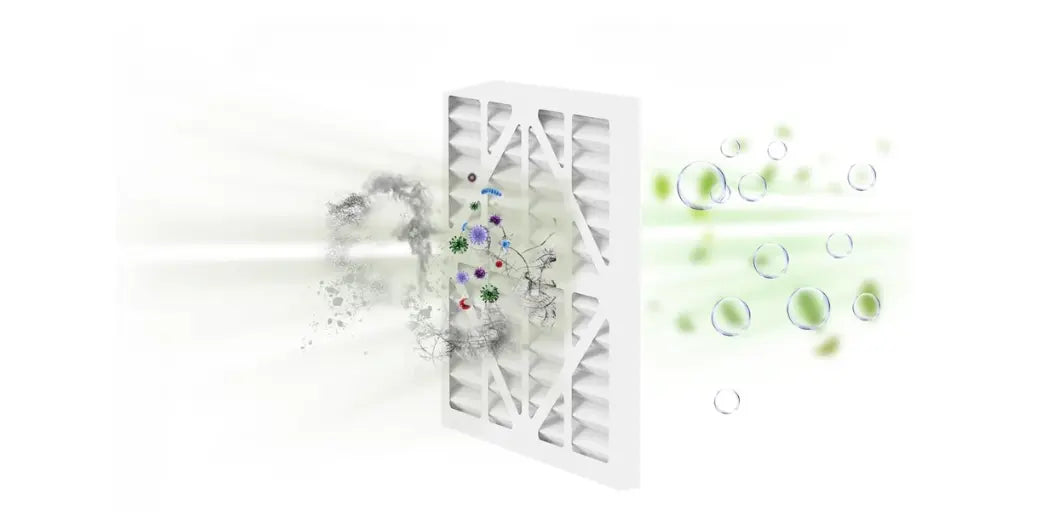
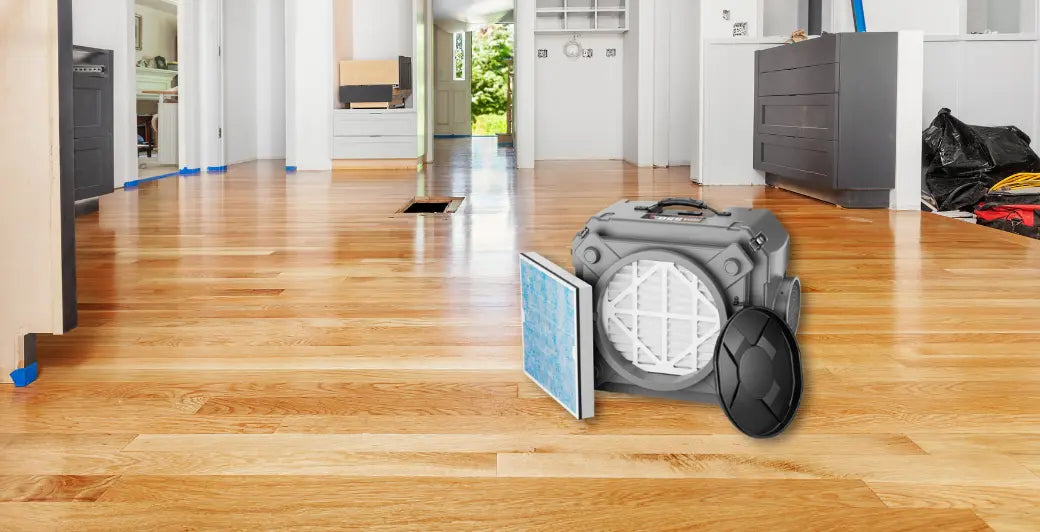
Shop For Dehumidifier
Abestorm 170 PPD 2,100 Sq.Ft Commercial Dehumidifier with Pump and Drain Hose | Hurricane 800
Abestorm 180 PPD 2,300 Sq.Ft Commercial Dehumidifier with Pump and Drain Hose | Hurricane LGR85
Abestorm 180 PPD 2,300 Sq.Ft Smart WIFI Commercial Dehumidifier with Pump and Drain Hose | Hurricane LGR85-Grey (wifi app not available now)
Abestorm 264 PPD 3,000 Sq.Ft Commercial Dehumidifier with Pump and Drain Hose | Hurricane 125P